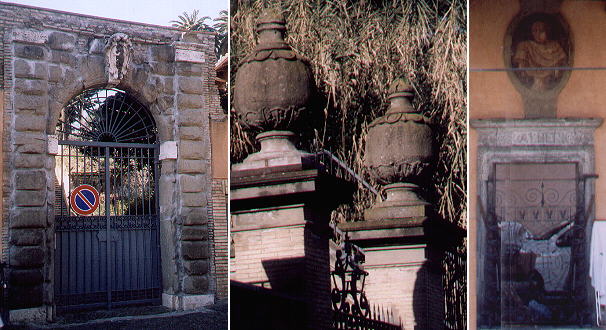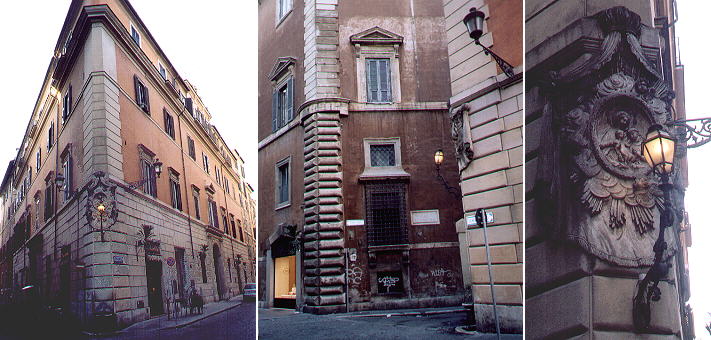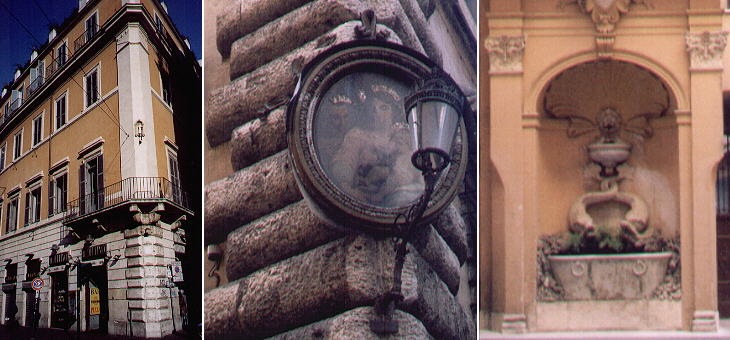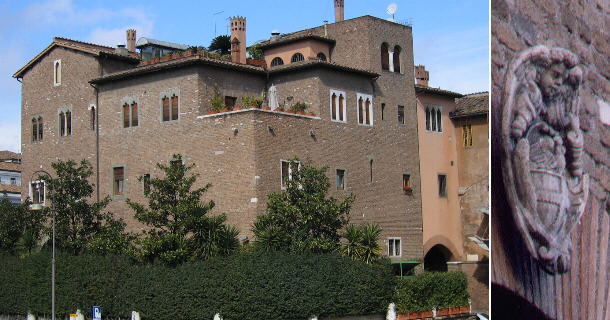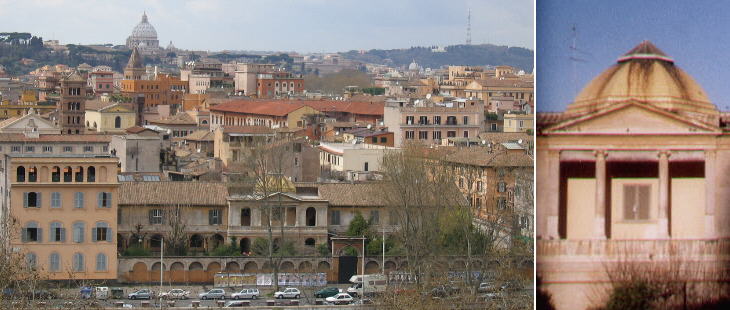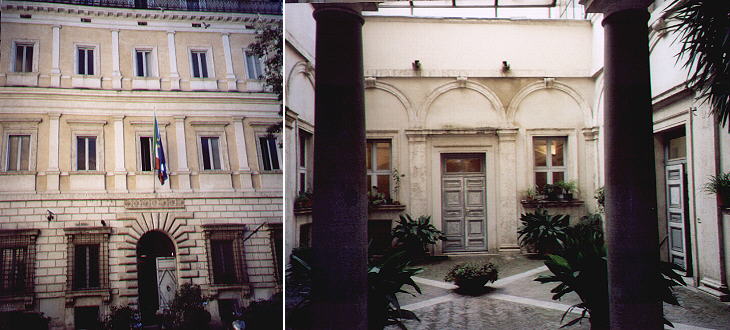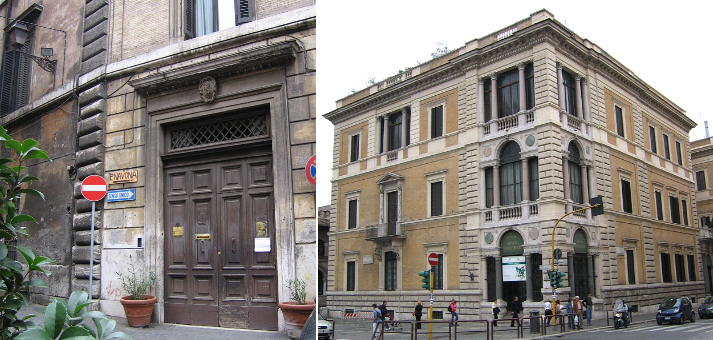|
TIMEO HOMINEM UNIUS LIBRI (St. Thomas Aquinas) (I fear the man who trusts one book only)   In plate 18: Porta Pertusa Villa Alberici
In their vineyard near Porta Pertusa, the Alberici built towards the end of the XVIth century a small country lodge, which today serves as gatekeeper's house.
One of the old gates retains its original design and the coat of arms of the family. A larger gate leading to a farmhouse was modified with only two
large vases giving an idea of its former appearance.
This simple XVIth century palace was modified in 1612 when Pope Paulus V Borghese wanted to grant to his nearby family palace a direct access to Via del Corso: this explains the sharp angle between the already existing Via del Leoncino and the newly
opened Via della Fontanella di Borghese, named after a small fountain at the corner between the two streets. The Della Genga, who acquired the building from the Borghese, became famous in 1823 when Cardinal Annibale Della Genga was elected pope (Leo XII).
Most of the buildings in the street marking the border between Rione Sant'Eustachio and Rione Pigna have late Renaissance features, but the narrowness of the street makes it
difficult to notice them. Palazzo Datti gained from the opening of Corso Vittorio Emanuele in the late XIXth century, but this event led to the opening of shops,
so that only its corner shows an interesting design. Palazzo Sinibaldi, another Renaissance palace has
one of the oldest sacred images of Rome. The courtyard of another palace is embellished by a finely designed fountain.
The architect and archaeologist Antonio Munoz (1884-1960) played a great role in the design of the "imperial"
perspectives which in the 1930s isolated some of the most imposing monuments of Ancient Rome. He supervised the opening of Via del Mare which led to the loss of Piazza Montanara and Ospizio di S. Galla and to the redesign of the area near S. Maria in Cosmedin.
He set his residence in a medieval house which had belonged to the Pierleoni, next to S. Giovanni Decollato: the house was actually
pulled down and rebuilt, but the small windows come from the old building. Although Munoz disliked Baroque art, his coat of arms was framed in a very Baroque way. The small church of S. Aniano
was located near this house. This Vth century French saint (Saint Agnan of Orleans) was the patron of the cobblers to whom the church belonged.
Donna Olimpia Maidalchini, the very powerful sister-in-law of Pope Innocentius X Pamphili (1644-55), built a small Casino overlooking the river.
In the XIXth century the Pamphili modified their property by adding a Neoclassic porch and destined it to provide a recovery for the old and the sick. The redesign of the river bed entailed the pulling down of the casino and a reduction of the gardens.
This small palace was built at the beginning of the XVIth century; its elegant design shows the hand of a talented architect, maybe Baldassarre Peruzzi.
The tiny courtyard, for once not used for parking cars, is worth having a look at.
Palazzo Primoli has two faces. It was built in the XVIth century and its main entrance was in Piazza
dell'Orso. In 1886 the area was modified by the quays which prevented the Tiber from flooding.
A few years later, the owner of the palace, Count Giuseppe Primoli, who had married a member of the
Bonaparte family, enlarged it and built a new fašade in a XXth century Renaissance style. He donated his collection of paintings, statues and other memorabilia of the Bonaparte to
the City of Rome to form what is now called Museo Napoleonico. Go to my Home Page |
All images © 2005 by Roberto Piperno. Write to romapip@quipo.it (alternative e-mail address at romeartlover@katamail.com)
